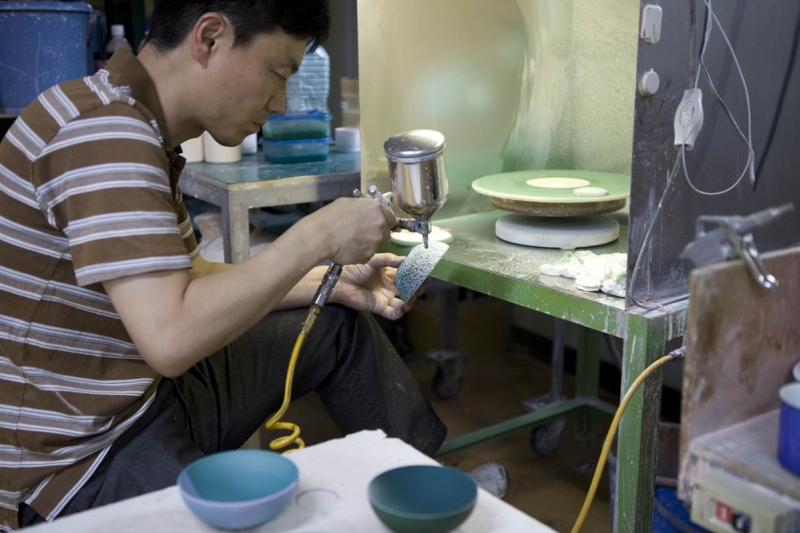Interview: Tomás Alonso
Spanish designer Tomás Alonso’s work is characterised by simplicity and an unpretentious ingenuity. For the 2016/ project Alonso is creating a series of objects that make full use of the precision and sophisticated porcelain-making techniques available in Arita.
- What were your first thoughts when you were approached to work on this project?
I was very happy. I had seen the Arita ceramics produced for the 1616 / arita japan collection and I had heard about the techniques that were available there. Going to Arita and seeing these techniques first hand was great. I asked questions about processes that I had been told were impossible in Europe and in Arita I was told; “that is possible, we do it all the time.” It was pretty impressive.
- What were your most significant impressions from that first trip?
The techniques the potteries use are different to anything I had seen before; they allow designers to achieve new things. And I was impressed with the organisation of the whole region: for example there is a large centre for the research of ceramics where processes and materials are constantly tested, this facility really helps push the industry forward. Also, you have to remember that all the potteries and companies involved in this project are normally competitors, they all sell in the same region and for them to understand that to grow their businesses they must join forces is remarkable. I can’t think of many regions where the same would happen.
- During that visit did you have any idea of what you might design for the project?
Not at all. Often when I visit factories I will go with a blank mind. I understood I would learn a lot whilst there and I didn't want to be too influenced by a preconceived idea.
- What are the main principles of the collection you designed as a result of your brief and the visit?
I was asked to make decorative objects and so I came up with a series of products that don't have specific functions but instead work together in different contexts and in different arrangements. This will help in making the collection commercially successful. And that was an important part of our brief – to design something that could sell, not a showpiece, designs that would make a real difference for these companies.
- How unusual is it to hear that in a brief?
It is very important and it is the reality of what we should be doing. With this project I felt the pressure that this was, in some cases, the potteries last chance to do something significant.
- Are there any specific techniques typical of Arita porcelain that you are making use of in your designs?
The mould-making techniques and the way the Arita potteries can fire porcelain to maintain a shape is all about precision. The shapes in my designs are simple and basic but actually they are a real a challenge to achieve. If anyone could do it, it would be these potters. Also, we are using special clay developed in Arita that allows the shapes to be thinner and stronger and create crisp geometrical shapes. If we were using standard porcelain we wouldn't arrive at such a fine result.
- What has impressed you most about the potteries?
The level of precision and the tenacity of the people. The craftsmen and women we are working with go the extra mile to make sure everything is done properly.











